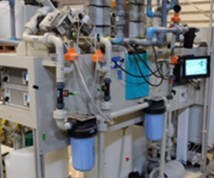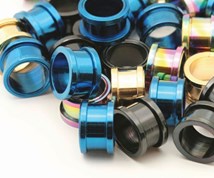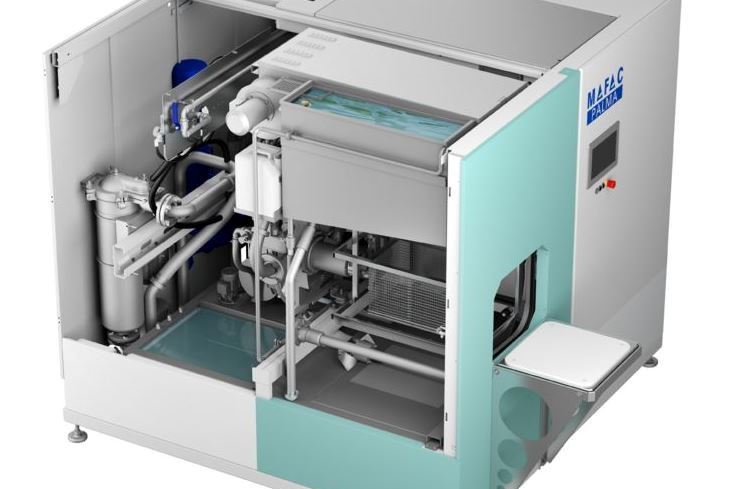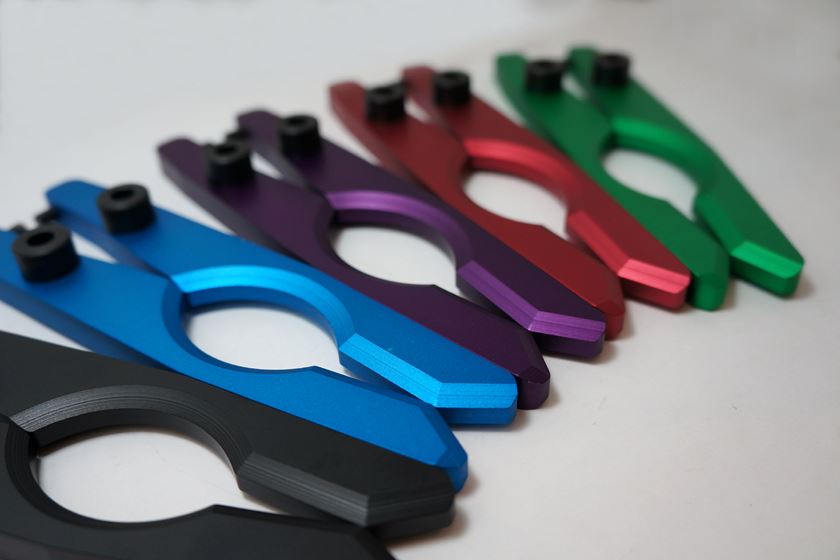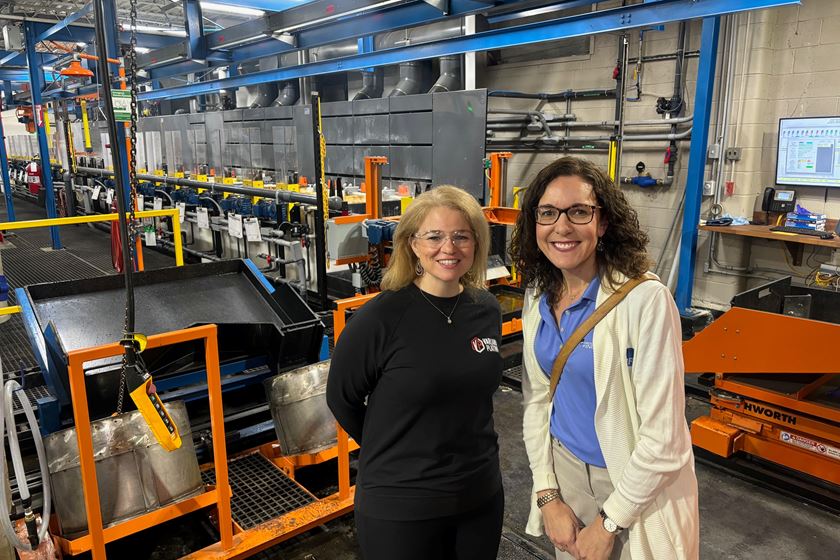Increasing Coating Thickness
How can I modify my e-coat process to increase film thickness?
Q. I am coating CRS and galvanized steel in a coating basket with capacity for 10 m2 of parts. I have eight anodes with 0.25 m2 each. I am trying to obtain 35-37 microns of epoxy electrocoat using a 400-V, 120-amp rectifier, but I can only get 27-30 microns consistently. My application voltage is 350 V with a 3-min. cycle time. What can I modify in my system to be able to reach the greater film thickness?—A.Y.
A. Let me start by saying that not only rectifiers and anodes define the overall thickness achieved in the electrocoat system. Other chemical and physical parameters such as percentage solids, paint temperature and pH also play a significant role in the amount of e-coat film deposited. Since you do not mention any of these characteristics, I will assume that everything is in order in your system within your supplier’s recommended parameters and that the issue is really equipment-related.
Featured Content
Calculating the ratio of coated product (10 m2) to anode surface (eight anodes by 0.25 m2 per anode, or 2 m2) produces a ratio of 5-to-1. Typical electrocoat systems must have a cathode-to-anode ratio of 4-to-1 or less in order to operate as intended. In other words, you do not have enough anodes or anode surface in your electrocoat tank. To overcome this problem, you must either reduce the amount of product in the basket or increase the amount of anode surface you have in the electrocoat tank. To maintain your 10 m2 of coated product, you must have at least 2.5 m2 of total anode surface to meet the 4-to-1 ratio.
In addition to this cathode/anode ratio, the anode surface must be sufficient to not exceed a maximum current density of 53.5 amps/m2 for typical stainless steel anodes. Ruthenium oxide anodes can operate under higher current densities. Current densities as high as 100 amps/m2 have been used in systems operating with such anodes.
The number of amps your system would require can be calculated by multiplying the amount of product to be coated by the desired film thickness by a typical electrocoat efficiency, and then dividing by the cycle time. So in order to coat 10 m2 of parts with 37 microns of electrocoat in a 3-min. cycle time using a typical electrocoat efficiency of 1.05 amps/m2*micron, your system would require 129 amps (10 × 37 × 1.05/3 = 129). To figure the necessary anode current density, divide the number of amps by the anode surface (2.5 m2), and you get 17.3 amps/m2. This anode current density is OK for stainless steel anodes, however, your rectifier would be maxed out on amperage because of your high requirement for film thickness of 37 microns, requiring 129 amps vs. its 120-amp rating. Additional anodes and perhaps a bigger rectifier would help you accomplish greater film thickness consistently.
RELATED CONTENT
-
2020 Vision: The Future of Coatings
The year 2020 will be here before you know it, signaling the beginning of a new decade and bringing changes to the world as we know it.
-
Coating Systems with the Best Long-Term Performance
The best protection against corrosion and UV exposure, says Axalta’s Mike Withers, is electrocoat and a super durable powder coating.
-
8 Things You Need to Know About Paint Booth Lighting
Global Finishing Solutions has come up with some helpful insights on lighting for paints booths which plays a crucial role in achieving a quality paint job.



